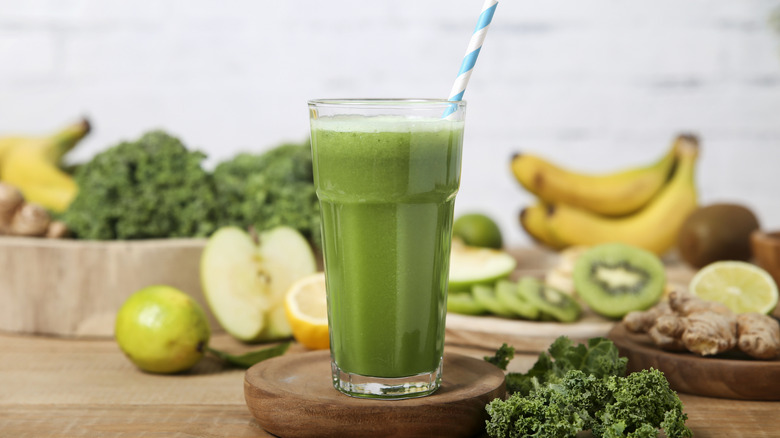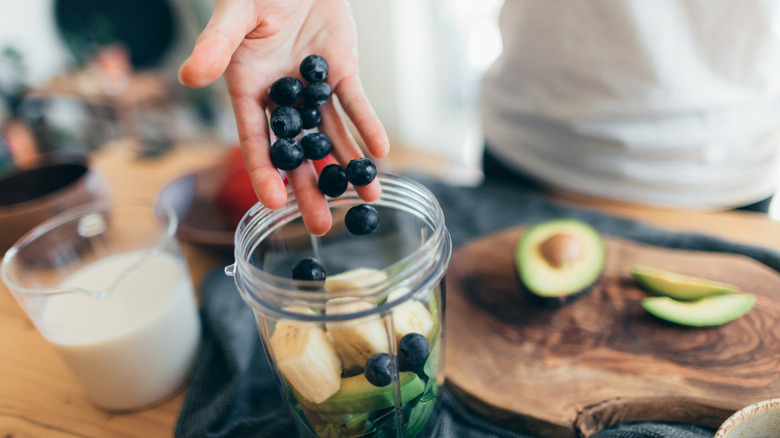Why The Order Of Your Smoothie Ingredients Matters
A smoothie should be the easiest thing in the world to make. You throw in some fruit and vegetables into a blender, add a bit of protein powder, perhaps some nuts, and pour in some milk or juice and hit the start button. Not so fast. When you're making a smoothie, you want to add the ingredients in the correct order so you can create a vortex that will pull everything you've put into the mix down toward the blades. This ensures everything is blended evenly and you get the smoothest smoothie possible. However, that ideal order depends on who you ask.
Most agree that the first thing to pour into the blender jar is whatever liquid you plan to use — milk, juice, water, or a plant-based beverage. The liquid will help the blades move through your ingredients and pull the solid ingredients down toward those blades. Starting with the liquids will also make clean-up easier. Most blender jars are designed with gradation marks, so you can measure the amount of liquid you are adding without needing a measuring cup. Others, however, recommend adding liquids last, since they will thin out the mixture and weigh down the other ingredients, making blending easier. Where experts disagree is what should come next. In some cases, it depends on your blender. Make sure you check your appliance's manufacturer's instructions. Your blend might function differently than others so the order of ingredients may vary.
Keep ingredients from sticking to the slides or clumping
If you're adding nut butter for an extra thick smoothie, Nutribullet suggests putting those into your personal blenders next — along with ingredients like powders and seeds and sticky ingredients like honey or agave — so they don't stick to the walls of the cup. This would also be a great time to incorporate a protein powerhouse like tofu. Adding those ingredients after the liquids also helps prevent clumping. Blendtec, which makes professional-grade blenders, suggests adding soft ingredients, like fruits and vegetables, after the liquids to help push the harder ingredients down during blending. Throwing some leafy greens into the jar at this point will also give you more time to break down their stringy fibers.
Many agree that the last ingredient to add would be harder and/or frozen fruits and vegetables and ice. Remember, if you're freezing bananas to use for a smoothie, slice them first. You should also cut up any other hard fruit or vegetables, like apples, so they are easier to puree. Once everything has been added to the container, you won't need to blend the ingredients for long. Doing so for too long will aerate the mix and form bubbles. It's also helpful to use a slow speed at first so the bottom ingredients will have more time to blend. You can increase the speed once you see that most of those ingredients have been well incorporated.

